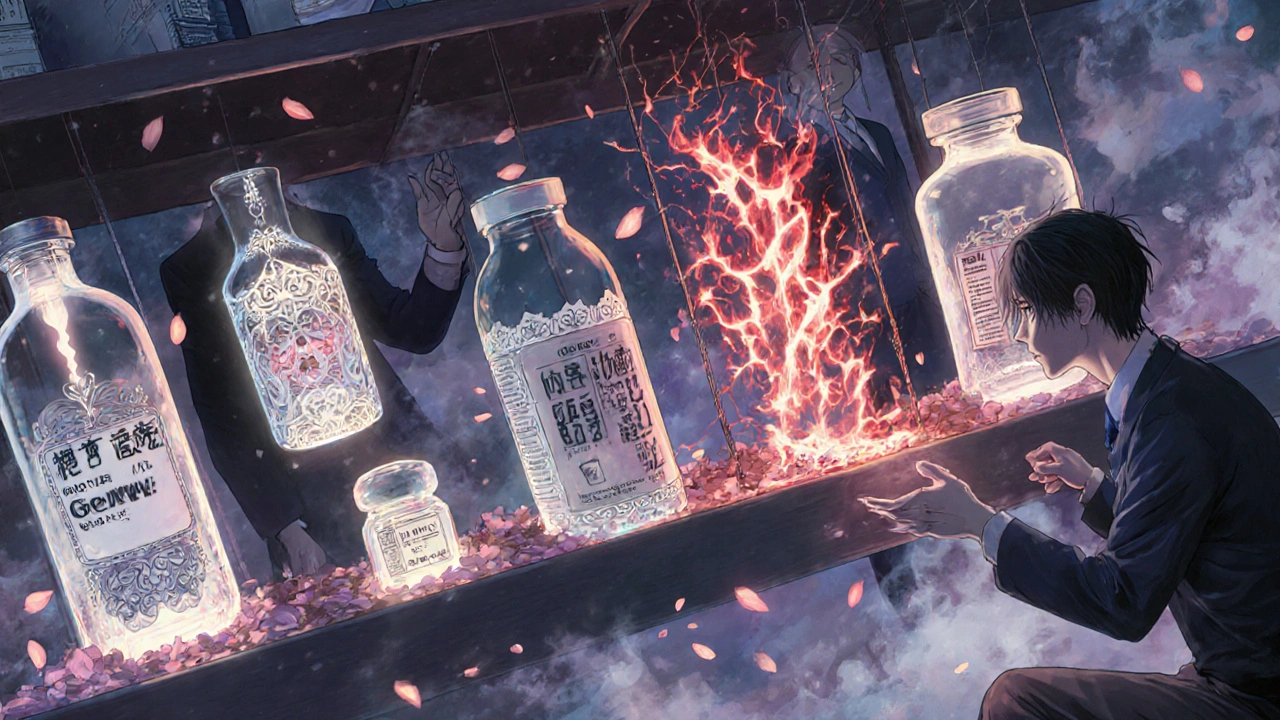
When you pick up a generic prescription, you expect to save money. That’s the whole point. But over the last decade, those savings haven’t stayed steady. Some generics have gotten cheaper. Others? They’ve skyrocketed-sometimes by more than 1,000%. If you’re taking medications like lisinopril, levothyroxine, or nitrofurantoin, you’ve probably felt this shift. It’s not random. It’s the result of how many companies make the drug, who controls production, and whether the market has enough competition to keep prices down.
How Generic Drug Prices Drop (When Competition Is Strong)
The moment a brand-name drug loses its patent, generic versions flood the market. The first generic usually costs about 90% less than the brand. But here’s where things get interesting: the more companies that start making it, the cheaper it gets. If just one company makes the generic, you might pay 90% of the brand’s price. With two, it drops to 65%. Three competitors? It’s down to 52%. Four or more? You’re looking at just 15% of what the brand charged. This isn’t theory. It’s data from the FDA and independent analysts. Take the blood pressure drug lisinopril. When five different manufacturers started making it, the average price per pill fell from $0.40 to $0.04. That’s a 90% drop in just a few years. The same pattern holds for metformin, atorvastatin, and amoxicillin. These are high-volume drugs. Lots of manufacturers. Low prices. That’s the ideal scenario.The Dark Side: When Fewer Companies Mean Higher Prices
But what happens when only one or two companies make a generic drug? That’s where things go wrong. Between 2013 and 2018, the price of generic nitrofurantoin-used to treat urinary tract infections-jumped 1,272%. Why? Because the number of manufacturers dropped from six to two, then one. When the last company raised prices, there was no one else to step in. This isn’t rare. In 2021, researchers found that 8.2% of generic drugs saw price jumps between 100% and 500% in just one year. The common thread? Fewer than three manufacturers. Harvard’s Dr. Aaron Kesselheim found that 78% of all price hikes over 100% happened in markets with three or fewer makers. The same thing happened with cyclophosphamide, a cancer drug. When two of the three manufacturers stopped production, the price jumped 3,000% overnight. The problem isn’t just about greed. It’s about supply chains. Many generic drugs are made overseas. If a factory in India or China fails an FDA inspection, production halts. The FDA found that 23% of foreign generic plants had quality issues in 2023. When that happens, the remaining manufacturers can raise prices-and they do.Year-by-Year Price Shifts: What the Numbers Show
Looking at the big picture, generic drug prices have dropped overall. But averages lie. The Congressional Budget Office says generics saved the U.S. $2.2 trillion between 2008 and 2017. That’s real money. But not all drugs followed that trend. In 2022, the average list price for generics rose 5.2%. In 2023, it rose 4.9%. That sounds small. But behind that number are hundreds of drugs that jumped 30%, 50%, even 100%. IPD Analytics found that between January 2022 and January 2023, 40 generic drugs increased in price by an average of 39%. Meanwhile, others like levothyroxine (used for thyroid conditions) dropped 87% over the same period. The key? It’s not about the drug class. It’s about competition. Cardiovascular generics average just 12% of brand prices. CNS drugs like antidepressants? Around 25%. But for drugs with only one or two makers, prices can be 70% or higher of the brand. And those are the ones that hurt patients the most.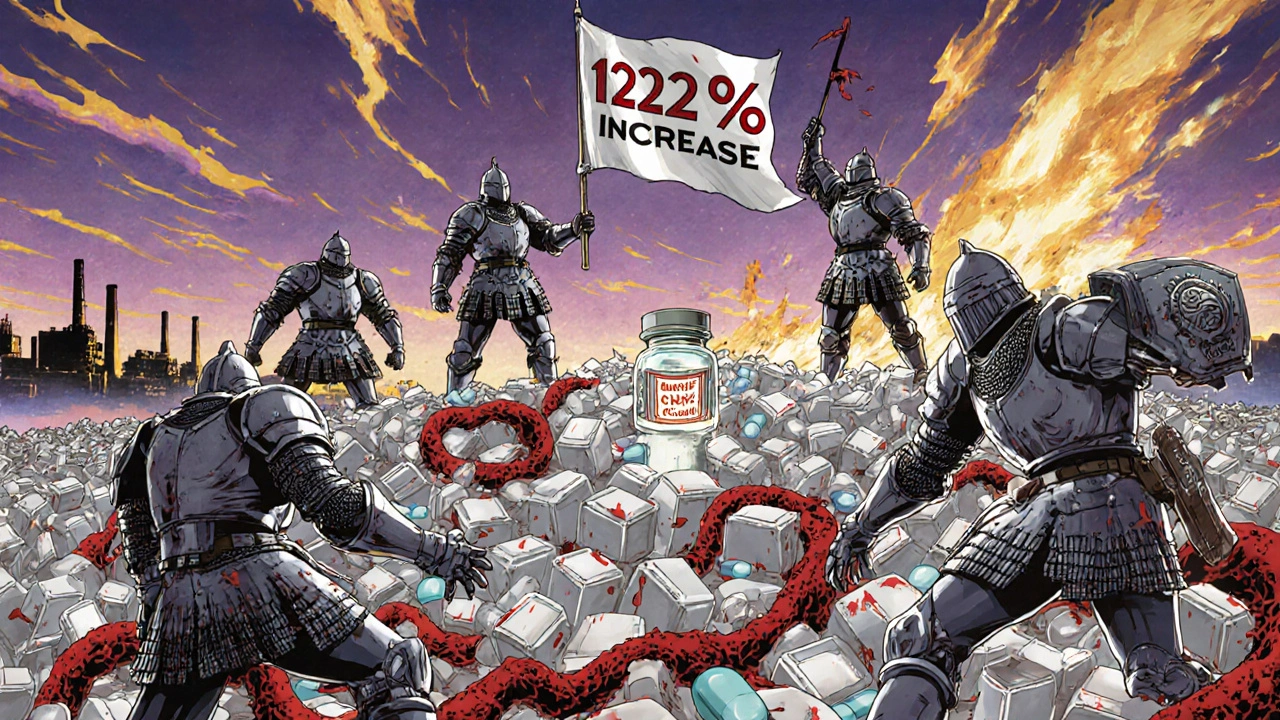
Real People, Real Price Shocks
You don’t need data to understand this-you need stories. A Reddit user in June 2024 posted that their generic lisinopril went from $4 to $45 at Walmart in 18 months. GoodRx data confirms it: that same drug jumped 247% between January 2022 and December 2023. Medicare beneficiaries aren’t immune. In January 2024, KFF found that 37% of seniors taking generics skipped doses or cut pills in half because they couldn’t afford them. That’s not because they’re careless. It’s because their monthly cost went from $15 to $60. Independent pharmacies feel it too. A 2023 survey found that 42% of small pharmacies had to absorb price spikes on 15% of their generic inventory. Some drugs flipped from profitable to loss leaders in weeks. That’s why many now refuse to stock certain generics-they’re too risky.Why This Keeps Happening
The system was built to encourage competition. But over time, consolidation changed everything. In 2013, there were about 150 companies making generics in the U.S. By 2018, that number dropped to 80. Today, the top 10 manufacturers control 70% of the market. The top five? They control 52% of sales. That’s not competition. That’s a cartel in all but name. Manufacturers don’t just stop making drugs because they’re unprofitable. They stop because they’re waiting for someone else to raise prices first. It’s a game of chicken. And patients pay the price. Regulators are starting to pay attention. The FTC has 12 active investigations into unjustified generic price hikes as of mid-2024. The FDA is fast-tracking approvals for drugs with fewer than three manufacturers. The Inflation Reduction Act removed the Medicaid cap on rebates in January 2024, which forced some brand-name drugs to lower prices-but generics didn’t get the same pressure. They’re still left to the mercy of the market.
What You Can Do Right Now
You can’t fix the system overnight. But you can protect yourself.- Use GoodRx or SingleCare. These apps show real-time prices across pharmacies. In 2023, users saved an average of $112.50 per generic prescription compared to cash prices at chain pharmacies.
- Ask for a 90-day supply. Many generics cost less per pill when bought in bulk. A 90-day supply of metformin might be $15 instead of $60 for three 30-day fills.
- Switch pharmacies. Prices vary wildly. One pharmacy might charge $40 for a generic; another across town might charge $12. Call before you go.
- Check for patient assistance programs. Even generics have manufacturer coupons. Some offer free or $5/month plans for low-income patients.
- Ask your doctor about alternatives. If your drug just jumped 200%, there might be another generic in the same class that hasn’t spiked yet.
What’s Next for Generic Drug Prices
The long-term outlook is mixed. The Congressional Budget Office predicts generic prices will rise just 1.5% per year through 2030-much slower than brand-name drugs. That’s good news. But 15% of generics are still considered “high vulnerability” to sudden spikes, especially in cardiovascular and mental health categories. The FDA’s 2024 plan aims to cut approval times by 20% for drugs with limited competition. If that works, we could see more manufacturers enter the market-and prices drop again. But until then, the risk remains. The system works when there are many players. When there are few, it breaks. If you’re taking a generic drug, don’t assume it’s cheap forever. Prices can change in weeks. Stay informed. Shop around. And don’t be afraid to ask questions. Your health-and your wallet-depend on it.Why do generic drug prices go up even though they’re supposed to be cheaper?
Generic drugs are cheaper because they don’t need to pay for research or marketing. But prices rise when there aren’t enough manufacturers making the drug. If only one or two companies produce it, they can raise prices without fear of losing customers. This happens often with older drugs that aren’t profitable enough to attract new makers.
Which generic drugs have had the biggest price increases?
Some of the most dramatic increases happened with nitrofurantoin (up 1,272%), cyclophosphamide (up 3,000%), and doxycycline (up 1,500%). These drugs were once made by many companies, but as manufacturers left the market, prices soared. Drugs for rare conditions, older antibiotics, and those made overseas are most at risk.
Are generic drugs still worth it if prices keep rising?
Yes, but not always. On average, generics are still 80-85% cheaper than brand-name drugs. But for a small group of medications-about 10%-price spikes mean they cost nearly as much as the brand. That’s why shopping around and using discount apps like GoodRx is critical. For most people, generics still save money, but you have to be proactive.
Can I get the same generic drug at a lower price from a different pharmacy?
Absolutely. Prices vary wildly between pharmacies-even within the same chain. A 30-day supply of generic lisinopril might cost $12 at one CVS, $45 at another, and $8 at a local pharmacy. Always compare prices using apps like GoodRx, SingleCare, or Blink Health before filling your prescription.
Why don’t insurance plans cover generic drugs better?
Insurance plans often have low copays for generics-but those copays are based on outdated price data. When a drug’s price spikes, the insurer doesn’t adjust the copay right away. So you end up paying more out of pocket. Also, some plans use “preferred” pharmacies that don’t always offer the lowest cash prices. Always check the cash price before using insurance.
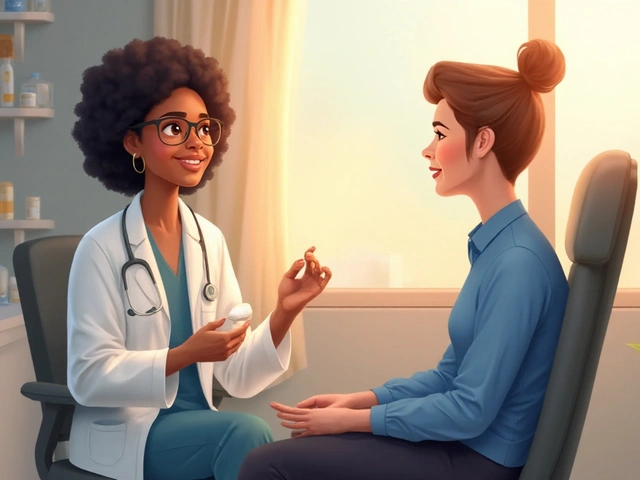

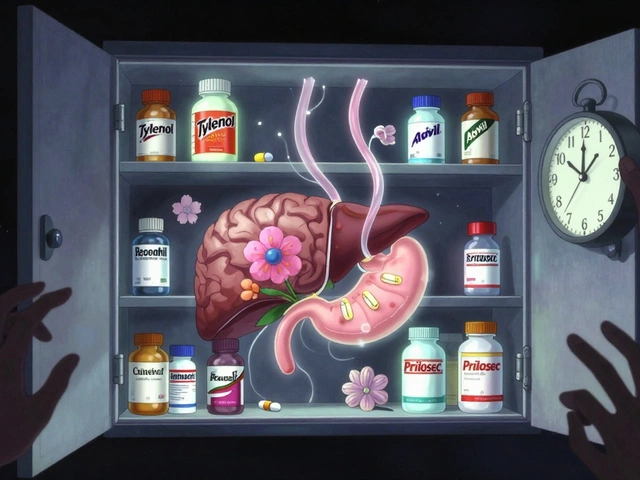
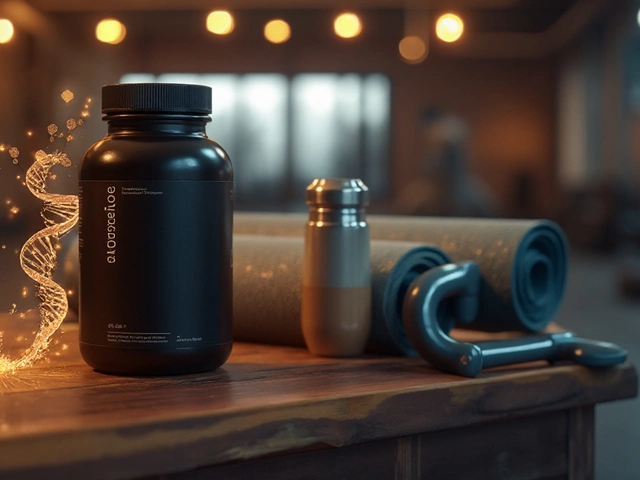

daniel lopez
November 20, 2025 AT 13:55This isn't just about pharma greed-it's a full-on oligopoly orchestrated by the FDA and Big Pharma to keep prices high while pretending generics are cheap. You think the FDA is protecting us? They shut down Indian factories on minor paperwork errors while letting the same plants reopen in 3 months. Meanwhile, the top 5 companies quietly buy up the small players. It's a cartel. And they're laughing all the way to the bank while seniors split pills. The government knows. They just don't care.
Nosipho Mbambo
November 21, 2025 AT 07:41So... you're telling me I'm paying $45 for lisinopril... because... there's not enough companies making it? I mean... I get it... but... why does this even happen? Like... is there no one else who can make it? Why not just... make more? Why is this so complicated??
Katie Magnus
November 21, 2025 AT 08:06OMG I can't believe people are still surprised by this?? Like... duh. Of course prices go up when only one company makes it. That's like... Basic Economics 101. But also-why are we even using generics anymore? They're just branded drugs with different packaging. I'm switching to herbal supplements. Turmeric cures everything. Also, I saw a TikTok that said the FDA is funded by Big Pharma. It's all connected.
King Over
November 22, 2025 AT 23:54Used to be $5 for my metformin. Now it's $38. I just pay. No point in yelling. I'm tired. Just let me live.
Johannah Lavin
November 24, 2025 AT 05:02Y'all. I just want to say-I see you. I've been there. Splitting pills. Calling 5 pharmacies. Crying in the parking lot after seeing the price. 🥺 But guess what? You're not alone. I started using GoodRx last year and saved $120/month. Also, my pharmacist gave me a free 30-day sample when I told her I was skipping doses. Kindness still exists. You deserve to breathe. You deserve to be healthy. 💛
Ravinder Singh
November 25, 2025 AT 19:12As someone from India where many generics are made, I can tell you-it's not just greed. It's logistics. Factory shutdowns, raw material shortages, shipping delays, FDA inspections... all of it adds up. But here's the thing: the system isn't broken-it's just unbalanced. More manufacturers need to enter, and yes, we need transparency. But also, patients need to understand: if a drug costs $0.02 per pill, someone somewhere is working 16-hour shifts to make it. Let's not vilify the workers-let's fix the system that exploits them.
Russ Bergeman
November 26, 2025 AT 00:10Wait, so you're saying the price went up because there were fewer manufacturers? But didn't the article say competition drives prices down? So... if there's less competition, prices go up? That's... basic? Why is this even an article? Also, you didn't mention that 90% of these drugs are made in China. That's the real problem. China controls the supply. End of story.
Dana Oralkhan
November 27, 2025 AT 06:33Thank you for writing this. I’m a nurse, and I see patients choosing between insulin and groceries every day. The fact that we’re even having this conversation in 2024 is heartbreaking. But please-don’t just shop around. Talk to your pharmacist. Ask if they have samples. Ask if your doctor can write for a different generic. You’re not being difficult. You’re being brave. And you’re not alone.